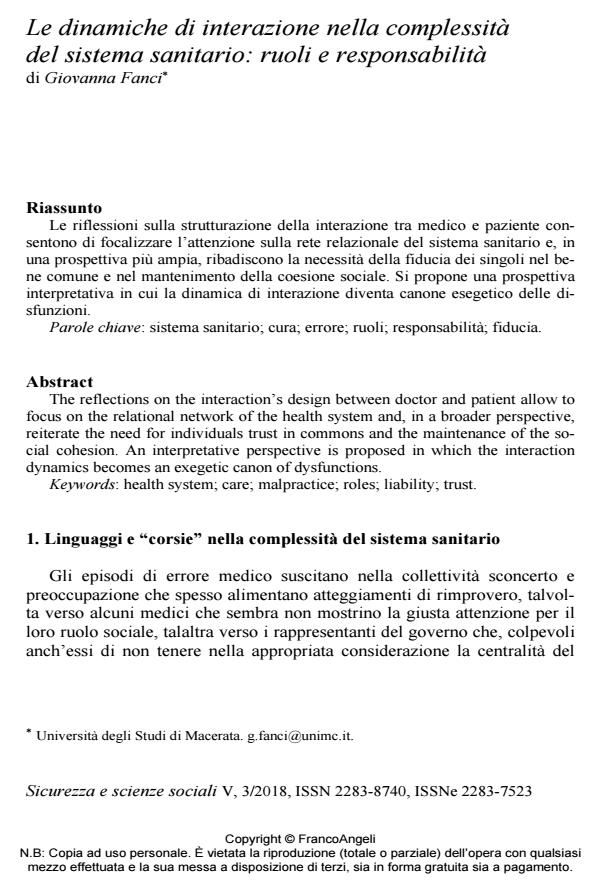Le dinamiche di interazione nella complessità del sistema sanitario: ruoli e responsabilità
Journal title SICUREZZA E SCIENZE SOCIALI
Author/s Giovanna Fanci
Publishing Year 2019 Issue 2018/3
Language Italian Pages 18 P. 19-36 File size 194 KB
DOI 10.3280/SISS2018-003003
DOI is like a bar code for intellectual property: to have more infomation
click here
Below, you can see the article first page
If you want to buy this article in PDF format, you can do it, following the instructions to buy download credits

FrancoAngeli is member of Publishers International Linking Association, Inc (PILA), a not-for-profit association which run the CrossRef service enabling links to and from online scholarly content.
The reflections on the interaction’s design between doctor and patient allow to focus on the relational network of the health system and, in a broader perspective, reiterate the need for individuals trust in commons and the maintenance of the social cohesion. An interpretative perspective is proposed in which the interaction dynamics becomes an exegetic canon of dysfunctions.
Keywords: Health system; care; malpractice; roles; liability; trust.
- Handbook of Research on Trends and Issues in Crime Prevention, Rehabilitation, and Victim Support Giovanna Fanci, pp.312 (ISBN:9781799812869)
Giovanna Fanci, Le dinamiche di interazione nella complessità del sistema sanitario: ruoli e responsabilità in "SICUREZZA E SCIENZE SOCIALI" 3/2018, pp 19-36, DOI: 10.3280/SISS2018-003003